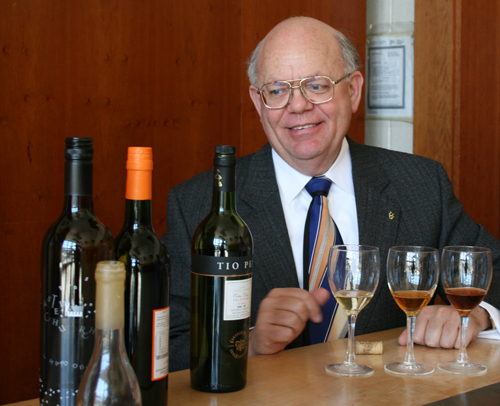
The recent economic recession hit consumers where we wine and dine, especially where we wine. Expensive bottles were suddenly going nowhere.
“Restaurant managers found themselves with huge inventories that were costing them money,” says Prof. Joe Barth, Hospitality and Tourism Management. “Some fine dining restaurants spend upwards of $100,000 on their wine inventories, which is a lot of money to have sitting in a cellar doing nothing.”
Barth says many restaurant owners struggled to manage their inventories and rework their wine lists to meet changing demand. “There were no real tools to help them analyze and optimize the financial performance of their wine lists. When you are talking about hundreds of wines and thousands of bottles, it’s hard for restaurant owners to get a sense of which wines are turning a profit on the invested capital and which are dragging them down.”
That is until now. The Guelph professor has developed an analytical model to help restaurant owners manage their wine inventories and profit from their wine lists.
“Fine dining restaurants want to have an extensive wine list because it signals to the customer that they are a high-quality restaurant,” he says. “Customers like the idea of dining at a place with an extensive wine list even if they aren’t drinking the expensive wines.”
Drawing from the concepts of yield management, retail science and menu engineering, Barth developed a model called WINSPID (WINe Sales Per Inventory Dollar) that allows managers to analyze, improve and monitor the performance of their wine list. His research paper about the model recently appeared in the International Journal of Hospitality Management.
“It’s a fast and easy way to determine if changes to the wine list, pricing and wine inventory are improving the returns on the investment in wine or not.”
Divide your wines sales by your inventory amount; a WINSPID number of one or higher means you are about average. If the manager’s decisions about the wine list, pricing and inventory increase the WINSPID, the wine program is getting better. Top fine dining restaurants sell about $100,000 worth of wine in a month. If your inventory is worth about $50,000, then your WINSPID number is two and your wine list is well above average.
Not only can owners determine whether inventory is in line with sales, but they can also calculate which selection or category is most profitable by dividing sales of individual wines by inventory costs.
“The model can tell you which wines are productive for you based on the amount of inventory you are carrying, the markup you are getting on the wine and the investment you are making in inventory. It’s a quick way to identify wines that are not being well managed and alert restaurant owners that changes need to be made by changing the price, buying less inventory or taking the wine off the list.”
His second analytical model also draws on menu engineering, which graphically divides a wine menu into four categories:
- House favourites. Popular wines with small markups − usually double the price paid − that are less profitable on a per-unit basis.
- Special categories. Wines with high markup, high per-unit profit, but low turnover. Promoting these wines might help increase turnover; reducing inventory improves WINSPID.
- Change opportunities. Low markup, low turnover wines. Take them off the list. Despite value pricing no one is interested in buying these wines.
- Star performers. Wines with high markup, high turnover, high profit. These are keepers for your list.
Using WINSPID and these categories, owners can track markup, volume and turnover and learn why a wine does well or poorly.
Furniture retailers use similar models, says Barth. “Wine is closer to retail than food because it doesn’t have to be prepared and is often sold in the package in which you buy it. Although wine is easy to sell, it’s hard to manage.”
Barth now gives seminars about this tool to restaurant owners. He’s also helping them introduce the model into their restaurants, creating case studies that he can use in teaching undergraduate beverage courses.